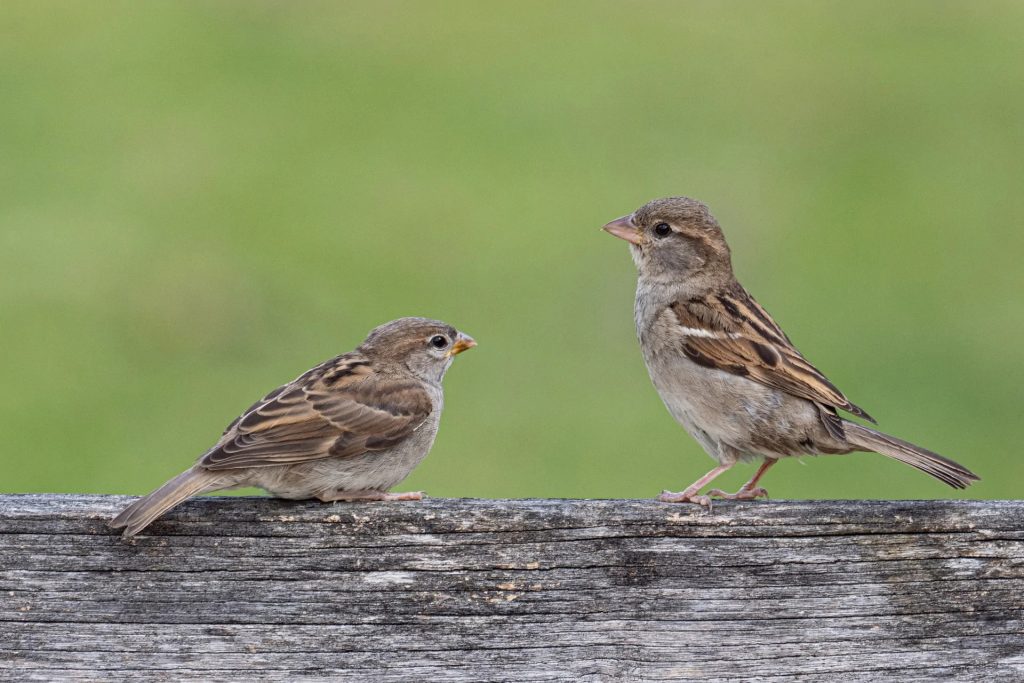House sparrows, which were once an integral part of our environment, have all disappeared 2 decades ago. This ‘common bird’ that lived in the small holes and pipes of our houses, which used to finish off our leftover food, today lists itself amongst the endangered species, states The International Union for Conservation of Nature (IUCN).
Environmental conservationists blame the decline in the population of house sparrows to the unfriendly architecture of our homes, trimming of trees, chemical fertilisers in our crops, noise pollution that disturbs acoustic ecology and exhaust from vehicles and industries.
The debate about whether the digital revolution has jammed the air passages is inconclusive, but common people say it is no coincidence that the house sparrow started disappearing in the late 1990s, when mobile phones came to India. Sundaypost sits with a couple of environmental conservationists to raise awareness and educate people about the dos to bring back our little house bird.
Subhransu Satpathy, who is known as the ‘Birdman of Odisha’ is a UN award winning environmentalist, working on nature conservation says that he has been conducting workshop to save thirsty birds in summer since 2008. Subhransu, who has been on a mission to take the revolution to Dhenkanal, teaches students to create seedballs and be a part of the greener planet.” Also I have distributed more than 35K earthen pots for thirsty birds and created more than 1Lakh seedballs”, says Sathpathy.
“The sparrow’s ecological significance is related to the vegetative cover of an area because it reflects the native and historical vegetative range of the region. This bird needs various native species of vegetation, including numerous wildflowers, shrubs, and trees for sustenance. Causes for the decline of sparrow population are loss of habitat due to rapid urbanisation, diminishing ecological resources for sustenance, high levels of pollution and emissions from microwave towers are few of the many reasons”, says Subhransu.
“Ventilators in homes have been replaced by ACs and trees by ornamental plants and decorative flower shrubs in parks, making it impossible for the bird to make nests”, he added.
Birds are known to be sensitive to magnetic radiation and mobile tower airwaves can interfere with their sensor & misguide while flying. Even in a case study I came to know in Chennai at least four of the 200 odd species of birds are disappearing very fast. So I thought the excessive buildings of mobile tower definitely affect birds. As a part of architectural view most house sparrows used to live in crevices of building, but in new era glasshouses don’t have space for them. Polluted areas are never a chosen place for birds nesting. Now a day’s trees are vanishing in cities so birds are found in electric line instead of branch. There’s a lots of bird dying of 11KV electric line. The electric authority has to use coated 11KV line to save these tiny creatures. So by adding these we may reverse the extinction of house sparrows.
First thing towards creating awareness is trying not to add to the worse. So I am creating awareness to save these tiny creatures. We are building eco friendly space for house sparrows where they can build nest and we can make that area completely devoid of air and noise pollution and no cracker zone as well.
Simple, doable and affordable things like putting nesting boxes and water/grain bowls in balconies are a few activities that we ask people to do.
Bijendra Majhi, Secretary Anchalik Gramya Vikash Parishad says that the conversation of sparrows began in 2010 when an NGO Nature for Society planned initiatives.
My only concern is availability of food and shelter for the birds. Technology is growing day by day but it affects environment. Earlier sparrows were found in greener, eco-friendly and quite common residential areas. But currently due to the concrete (cement) architectural design, noise & air pollution house sparrows have become extinct. So lifestyle of humans has definitely led to extinction of the species.
People should locate artificial nests, feeder bottles and water pots in areas where sparrows still exist, so it can help them breed. Planting trees and avoiding trimming of branches also will help to a great extent. Scaling up this initiative, raising awareness about frequent scientific monitoring of sparrows by studying their social behaviour, population status and conservation needs are crucial, he said.
